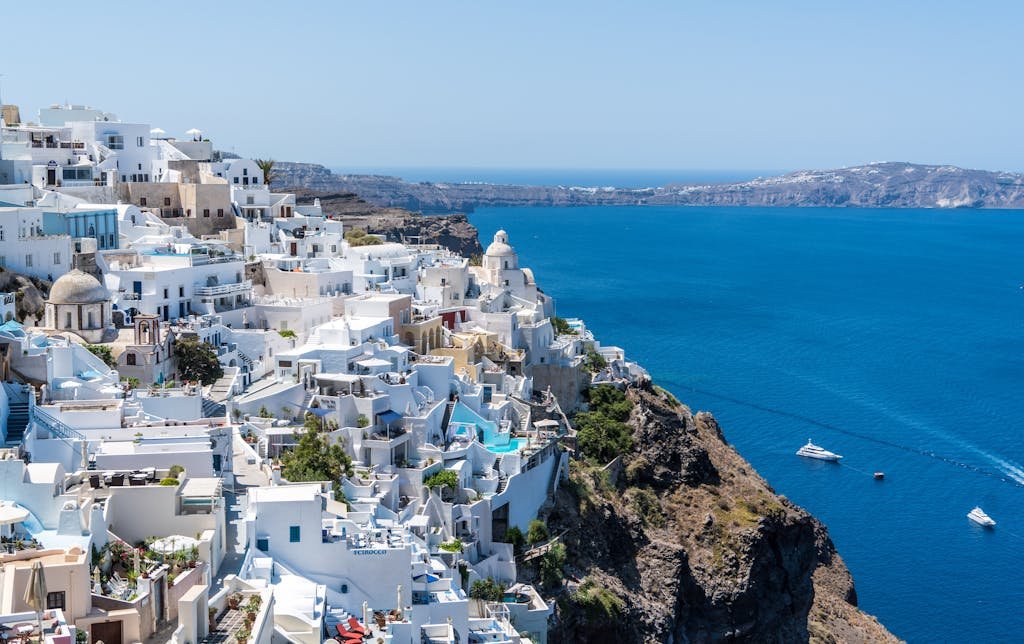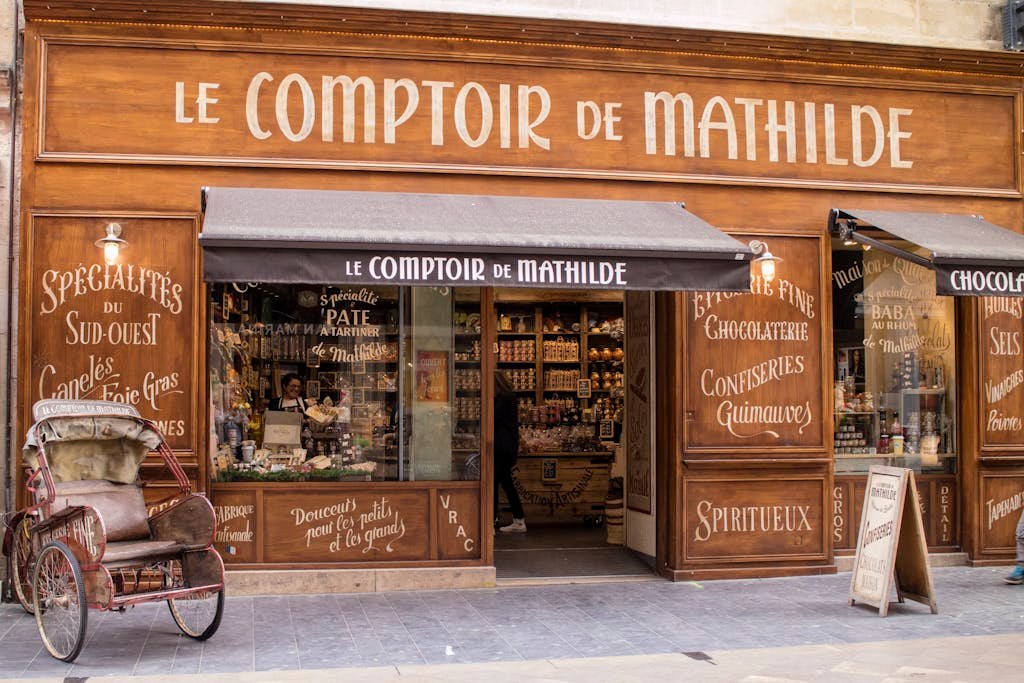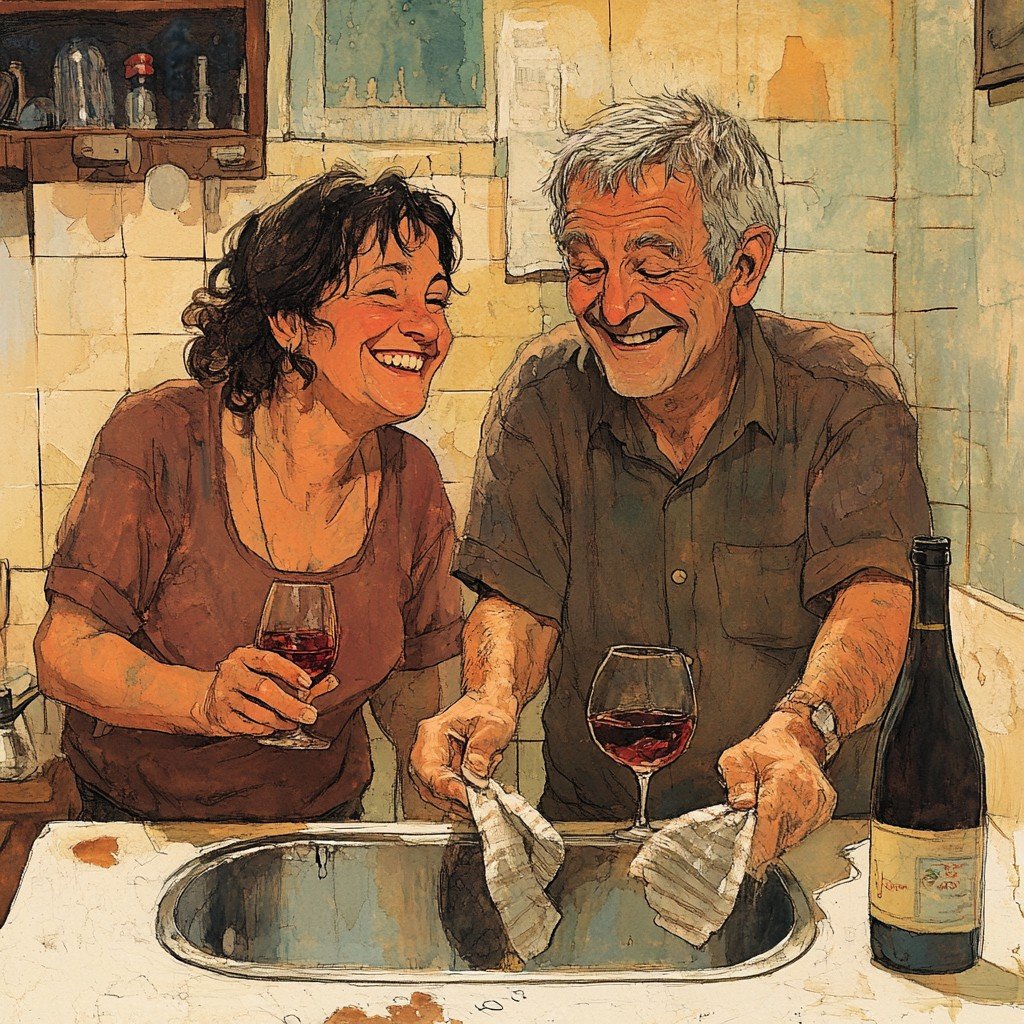Unlocked: Your Epic 6-Month Mediterranean Adventure! (This Is Your Best Europe Travel Itinerary)
Picture this: you’re sipping morning espresso in a quiet Tuscan village where the baker knows your order by heart, or perhaps strolling through sunlit Portuguese alleys where shopkeepers greet you by name after just a week. Maybe you’re settled into a whitewashed Andalusian town for the winter, watching locals gather for their evening paseo while you plan tomorrow’s leisurely exploration of yet another centuries-old castle. This isn’t vacation—this is slow Mediterranean living, and it’s exactly what Southern Europe does best. It’s truly the best Europe travel itinerary for a deeper experience.
For mature travelers seeking more than a whirlwind tour of famous landmarks, the Mediterranean region offers something increasingly rare in our hurried world: permission to slow down. Here, afternoon siestas aren’t just accepted but encouraged, three-hour lunches are standard practice, and the phrase “mañana” isn’t procrastination—it’s wisdom about savoring today before rushing toward tomorrow. This deliberate pace is a cornerstone of the best Europe travel itinerary.
Why the Mediterranean Whispers Your Name: The Ultimate Slow Travel Magnet
The Mediterranean basin has been perfecting the art of gracious living for millennia, and it shows in every aspect of daily life. Unlike destinations where you feel pressured to check boxes and snap photos, Southern Europe invites you to settle in, breathe deeply, and discover what happens when travel becomes lifestyle rather than itinerary. This approach defines the best Europe travel itinerary for those seeking immersion.
The climate alone makes extended stays irresistible. While Northern Europe shivers through dark winters, places like Andalusia, Sicily, and the Algarve enjoy genuinely pleasant temperatures from November through March. I’ve watched countless travelers discover the joy of reading morning newspapers on sunny January terraces in Seville, or taking afternoon walks along Portugal’s coast in February while their friends back home battle snowstorms.
Cultural richness unfolds slowly here, revealing layers that rushed visitors never experience. Local festivals celebrate everything from almond blossoms to wine harvests, artisan markets showcase skills passed down through generations, and ancient ruins become familiar neighbors rather than tourist attractions. When you stay long enough, you start to understand the rhythm of daily life—which café serves the best morning coffee, when the fish market gets its freshest arrivals, which evening hours bring the most beautiful light for photography.
The budget advantages of slow Mediterranean travel often surprise people. Long-term apartment rentals in places like Puglia, Crete, or Portugal’s Silver Coast can cost less per month than most people spend on a week’s vacation. Add in the ability to shop local markets and cook occasional meals, plus the naturally lower prices in many Southern European destinations, and extended Mediterranean living becomes remarkably affordable. This affordability helps make it the best Europe travel itinerary for longer stays.
Perhaps most importantly, the pace naturally aligns with what many mature travelers prefer. There’s no pressure to rush between attractions, no anxiety about missing something, no exhaustion from overpacked schedules. Instead, you can spend a morning wandering through olive groves, an afternoon learning traditional cooking techniques, and an evening sharing wine with locals who’ve become genuine friends. This relaxed rhythm is what makes this the best Europe travel itinerary.

Spain: Where Every Long Stay Feels Like Coming Home
Spain perfects the art of regional diversity, offering dramatically different experiences depending on when and where you choose to settle. I’ve known travelers who spent an entire winter in a small Andalusian town, only to return the following summer to explore Spain’s lush northern coast—and swear both experiences felt like discovering completely different countries. This flexibility makes Spain a contender for your best Europe travel itinerary.
Andalusia in winter might be Spain’s best-kept secret for extended stays. While tourists flee southern Spain in summer’s heat, locals know that December through March brings some of Europe’s most pleasant weather. Seville transforms during these months—café terraces fill with locals rather than tour groups, the Alcázar gardens reach peak bloom, and you can actually enjoy midday walks through neighborhoods that become furnaces in July.
Granada offers particular magic for winter residents. The snow-capped Sierra Nevada provides a dramatic backdrop for morning coffee, the Alhambra attracts manageable crowds, and the city’s famous tapas culture encourages that slow, social dining style that makes evenings stretch pleasantly long. I remember meeting a Canadian couple who’d rented a small apartment overlooking the Albaicín for three months—they described it as the winter that taught them how to truly live.
Spain’s northern coast presents the perfect summer alternative, offering Celtic Spain’s green landscapes, cooler temperatures, and some of Europe’s best seafood. The Camino routes provide excellent walking for active travelers, while cities like San Sebastián and Bilbao combine cultural sophistication with manageable scale.
The practical advantages multiply with extended Spanish stays. The country’s excellent train system makes regional exploration easy without rental car commitments, long-term apartment rental markets cater increasingly to international visitors, and the tapas culture eliminates any pressure around formal meal planning. You can eat when hungry, rest when tired, and explore when curiosity strikes. This versatility solidifies its place in the best Europe travel itinerary.
Italy: Beyond the Postcards to True La Dolce Vita Living
Italy rewards slow travelers more generously than perhaps any other European destination, but you have to resist the temptation to tick off famous sites and instead allow yourself to be absorbed into local rhythms. The difference between visiting Italy and living there, even temporarily, is profound. For many, this offers the best Europe travel itinerary.
Spring in Umbria or Puglia reveals Italy at its most seductive. These regions offer Tuscany’s beauty without Tuscany’s crowds and prices, plus authentic local cultures that haven’t been overwhelmed by tourism. Umbrian hill towns like Spello or Montefalco provide perfect bases for extended stays—walkable historic centers, excellent local restaurants, and countryside that invites daily exploration.
Puglia, Italy’s “heel,” has become increasingly popular among slow travelers for good reason. The region combines Mediterranean climate with distinctly Italian character, reasonable prices with excellent infrastructure, and enough cultural attractions to sustain months of exploration. Staying in a traditional trullo or restored masseria provides authentic accommodation that becomes part of the experience rather than just a place to sleep.
Autumn in Tuscany offers everything the region is famous for—without summer’s overwhelming crowds and heat. Harvest season brings wine festivals, truffle hunts, and that legendary golden light that has attracted artists for centuries. More importantly for extended stays, autumn brings locals back to their favorite restaurants and cafés, creating opportunities for genuine connections that rushed summer visits rarely provide.
Wintering in Sicily has become increasingly popular among mature travelers seeking European culture with mild weather. Palermo and Syracuse offer urban sophistication, while smaller towns like Taormina or Cefalù provide coastal charm. Sicily’s position at the crossroads of Mediterranean civilizations means every town reveals layers of Greek, Roman, Arab, and Norman history—perfect for travelers who prefer depth over breadth. This historical richness makes it a strong choice for the best Europe travel itinerary.
The key to successful slow travel in Italy lies in choosing locations that encourage walking and local interaction. Agriturismos provide ideal accommodation for countryside stays, offering cooking classes, wine tastings, and agricultural experiences that connect you directly with Italian food culture. Historic village centers with good train connections give you both authentic local life and easy access to regional exploration.
Portugal: Europe’s Gentle Giant for Extended Escapes
Portugal has quietly become one of Europe’s most appealing destinations for extended stays, combining affordable living costs with sophisticated infrastructure, reliable weather with authentic culture, and English accessibility with distinctive Portuguese character. It’s the rare destination that manages to feel both foreign and familiar simultaneously, making it a strong contender for your best Europe travel itinerary.
The Algarve in winter transforms from crowded beach destination to peaceful retreat ideal for mature travelers. Temperatures rarely drop below 60°F, sunshine averages six hours daily, and coastal towns that strain under summer crowds become pleasantly quiet communities where weekly markets and local festivals provide gentle entertainment.
Lagos, Tavira, and smaller towns like Sagres offer different personalities for winter residents. Lagos provides more international community and dining options, Tavira maintains stronger Portuguese character with excellent train connections to Spain, and Sagres offers dramatic Atlantic coastline with some of Europe’s most spectacular sunsets. Many travelers rent by the month, using Portugal as a base for exploring both the country and neighboring Spain.
Lisbon and Porto during shoulder seasons showcase Portugal’s urban sophistication without peak-season pressure. Both cities reward extended stays with neighborhood exploration, excellent public transportation, and cultural offerings that rival much larger European capitals. The country’s famous hospitality becomes more apparent when you’re not rushing between tourist sites but instead shopping in local markets, attending neighborhood festivals, and developing relationships with shopkeepers and café owners.
The Douro Valley provides perfect countryside retreat for travelers drawn to wine culture, terraced landscapes, and river-based relaxation. Staying in quintas (wine estates) or small valley towns like Peso da Régua combines rural tranquility with easy access to Porto’s urban amenities.
Portugal’s practical advantages for slow travel include very reasonable long-term accommodation costs, strong expat support networks in popular areas, widespread English comprehension, and excellent public transportation. The country also serves strategically as a non-Schengen alternative for travelers managing visa timing, though Portugal’s appeal extends far beyond visa convenience. Its diverse offerings solidify its place as part of the best Europe travel itinerary.
Greece: Ancient Echoes and Island Rhythms for the Patient Traveler
Greece rewards patient travelers with experiences that feel almost mythical—not because they’re fantastical, but because they connect you directly with landscapes and traditions that have remained essentially unchanged for centuries. The key to successful slow travel in Greece lies in understanding seasonal rhythms and choosing destinations that match your preferred pace. This understanding is crucial for creating the best Europe travel itinerary.
Spring island hopping (April through May) offers Greece at its most beautiful, before summer heat and crowds transform the experience. Ferry schedules run frequently enough for flexible planning, accommodation costs remain reasonable, and islands reveal their authentic personalities rather than their tourist personas. Smaller islands like Naxos, Paros, or Crete’s less-visited regions provide perfect bases for extended stays.
Mainland Greece during shoulder seasons often surprises travelers who associate the country primarily with islands. The Peloponnese combines beach access with mountain villages and archaeological sites, while northern regions around Thessaloniki offer urban sophistication with easy access to mountain retreats and fewer international crowds.
Winter in Greece requires more strategic planning, as ferry schedules reduce significantly and some island accommodations close entirely. However, choosing one base location—perhaps Crete’s Chania, Athens for urban culture, or a Peloponnese coastal town—can provide excellent value and genuine local immersion during quiet months.
Greece’s affordability during off-peak seasons makes extended stays particularly attractive for budget-conscious travelers. Accommodation costs drop dramatically outside summer months, restaurant prices reflect local rather than tourist economics, and you’ll experience the famous Greek hospitality when locals have time for genuine conversation rather than rushed service.
The country’s food culture alone justifies extended stays. Local markets, family-run tavernas, and regional specialties vary significantly between islands and mainland regions. Learning to navigate Greek breakfast culture, understanding regional wine varieties, and discovering local festivals celebrating everything from olive harvests to religious traditions creates the kind of cultural immersion that transforms travel from sightseeing into life experience. These unique aspects contribute to Greece being part of the best Europe travel itinerary.
Unveiling the Mediterranean’s Secret Stays: Hidden Gems Awaiting Discovery
Beyond the obvious destinations, several Mediterranean regions offer exceptional slow travel experiences for travelers willing to venture slightly off established routes. These could be the hidden elements of your best Europe travel itinerary.
Croatia’s Dalmatian Coast during spring and fall provides stunning Adriatic scenery without summer’s overwhelming crowds and prices. Towns like Split and Dubrovnik serve as cultural bases, while smaller places like Korčula or Hvar offer island tranquility with reasonable ferry connections. Croatia’s wine regions inland provide excellent countryside alternatives for travelers preferring rural settings.
Turkey’s Mediterranean coast deserves serious consideration, particularly for travelers managing Schengen visa timing. Regions around Antalya and Bodrum combine reliable sunshine, affordable living costs, rich historical sites, and genuine Turkish hospitality. Turkey’s non-Schengen status makes it strategically valuable, while its Mediterranean climate and cultural richness make it intrinsically appealing. Check the Republic of Turkey Ministry of Foreign Affairs for current visa information.
Southern France’s quieter regions offer Provençal charm without Côte d’Azur prices. Areas like the Vaucluse or the Languedoc provide hill town beauty, excellent food and wine culture, and manageable tourism pressure. Late spring and early fall timing allows for market exploration, countryside walks, and cultural festivals without summer’s intense heat and crowds. For detailed travel information, refer to France.fr, the official tourism website.
Timing is Everything: When to Unlock the Mediterranean’s Magic
The best time to travel Mediterranean Europe depends entirely on your temperature preferences and tolerance for seasonal variations, but certain patterns consistently reward slow travelers. Choosing the right season is crucial for the best Europe travel itinerary.
Spring (March through May) brings blooming landscapes, comfortable walking weather, and local festivals celebrating winter’s end. This season offers ideal conditions for countryside exploration, outdoor dining, and cultural activities without excessive heat. Accommodation costs remain reasonable, and you’ll experience destinations as they wake from winter hibernation.
Fall (September through November) provides arguably the Mediterranean’s finest season—harvest celebrations, warm sea temperatures, and that legendary autumn light that photographers treasure. Crowds thin considerably after summer holidays, restaurant service improves, and locals reclaim their towns from tourist season pressures.
Winter (December through February) works beautifully for travelers seeking mild weather, authentic local culture, and budget-friendly extended stays. Southern Spain, Sicily, southern Portugal, and selected Greek locations offer genuine winter sunshine while Northern Europe endures dark, cold months.
The key insight for slow Mediterranean travel is that shoulder and off-seasons often provide superior experiences to peak summer visits. You’ll interact more with locals, pay significantly less for accommodation, and discover the authentic rhythms that define Mediterranean life beyond its tourist presentations. This strategic timing is part of the best Europe travel itinerary.
Master Your Mediterranean Journey: Practical Wisdom for Slow Travel
Monthly apartment rentals provide the best value and most authentic experience for stays longer than two weeks. Local real estate portals, long-term rental websites, and even direct contact with property owners often yield better options than traditional booking platforms. Look for locations with walkable town centers, good public transportation connections, and weekly market access.
Embrace siesta culture rather than fighting it. Mediterranean societies developed afternoon rest periods for excellent reasons—they allow for later, cooler evening activities, provide necessary breaks during hot weather, and create natural rhythm breaks that prevent travel fatigue. Plan morning activities, enjoy long lunches, rest during afternoon heat, and extend evening explorations.
Language basics open doors throughout the Mediterranean, even when locals speak English well. Learning simple phrases in Spanish, Italian, Portuguese, or Greek demonstrates respect and often leads to warmer interactions, local recommendations, and invitations you’d never receive as an obvious tourist. For basic phrases, consider resources like Duolingo or Google Translate.
Pack strategically for diverse climates and walking-intensive exploration. Mediterranean towns often feature cobblestone streets, hillside locations, and limited parking, making comfortable walking shoes and light luggage essential. Layer-friendly clothing accommodates temperature variations between coastal areas and inland towns, morning coolness and afternoon warmth.
Your Burning Questions Answered: FAQs for Mediterranean Bliss
Q: Is Southern Europe safe for extended solo travel, especially for mature women?
A: Yes, Mediterranean countries generally rank among Europe’s safest destinations, with strong local support networks and cultures that respect older travelers. Solo women consistently report feeling comfortable and welcomed throughout the region.
Q: How do I handle the 90-day Schengen limit for extended Mediterranean stays?
A: Strategic planning helps—alternate between Schengen countries (Spain, Italy, Greece, France) and non-Schengen Mediterranean destinations (Turkey, some Balkan countries). Portugal and other Schengen members also offer national long-stay visas for qualifying applicants. This is a crucial element for any best Europe travel itinerary.
Q: What’s the most budget-friendly Mediterranean destination for winter stays?
A: Portugal’s interior regions, southern Spain away from major cities, and off-season Greek islands consistently offer excellent value. Sicily and mainland southern Italy also provide reasonable winter costs with mild weather.
Q: Can I easily access healthcare as an extended-stay traveler?
A: Yes, all major Mediterranean destinations offer good healthcare infrastructure. Travel insurance designed for extended stays provides essential coverage, and many locations have English-speaking medical services accustomed to international residents. For more on travel insurance, consider reputable providers like World Nomads or Allianz Travel Insurance.
Q: Should I rent cars for extended Mediterranean stays?
A: It depends on your chosen locations. Urban bases with good public transportation often make car rental unnecessary and expensive. Rural or multi-location stays may benefit from monthly car rentals, but consider insurance, parking costs, and local driving conditions carefully.
Let the Mediterranean Set Your Pace
Southern Europe rewards travelers who understand that the best experiences often come not from rushing between famous sites, but from allowing yourself to be absorbed into rhythms that have sustained Mediterranean cultures for millennia. Whether you’re learning to time your daily walks with local custom, developing relationships with market vendors, or simply perfecting the art of afternoon café sitting, slow Mediterranean travel offers something increasingly rare: permission to truly relax. This deliberate approach defines the best Europe travel itinerary.
For travelers over fifty, the Mediterranean provides ideal conditions for that deeper kind of exploration that comes with experience and patience. The region’s natural beauty, cultural richness, and gracious pace of life create perfect conditions for those longer stays that transform travel from activity into lifestyle.
Your Mediterranean rhythm awaits—it might just teach you something profound about the difference between visiting a place and truly being there.

Slow Traveler
Thoughtful reflections and sustainable travel tips, hopefully, inspiring readers to pick up their traveling pack and begin their journeys.
No posts
Subscribe to the Newsletter


















